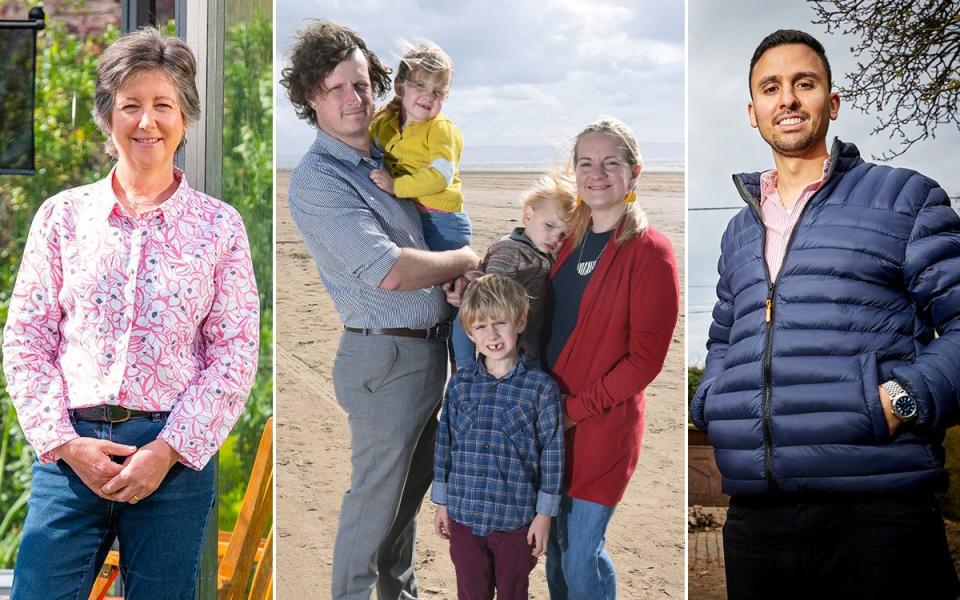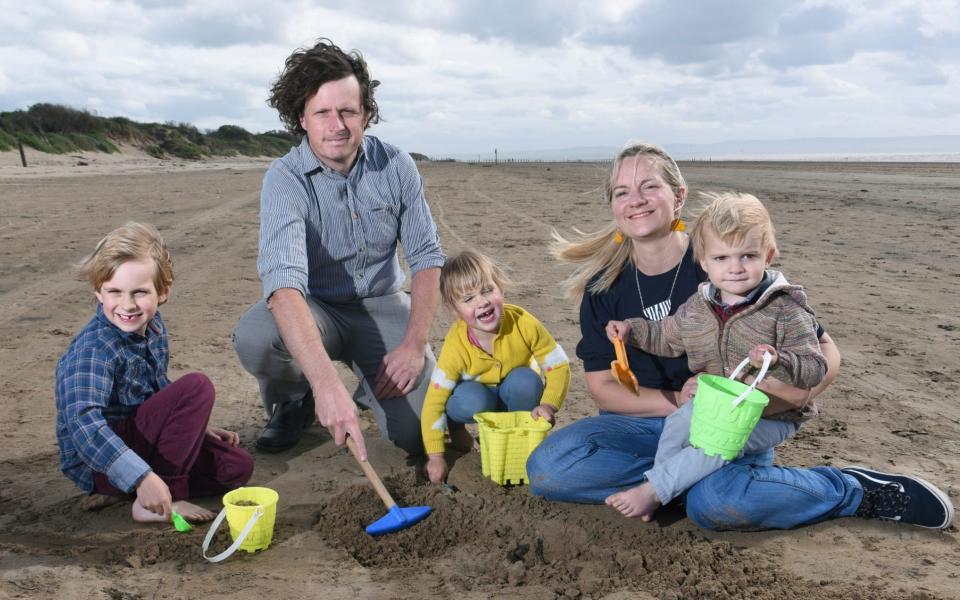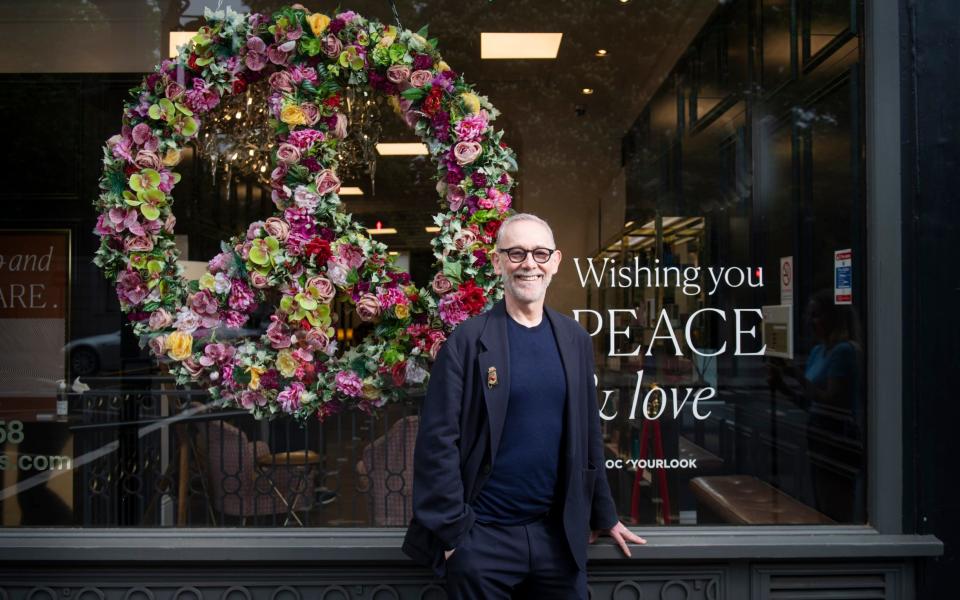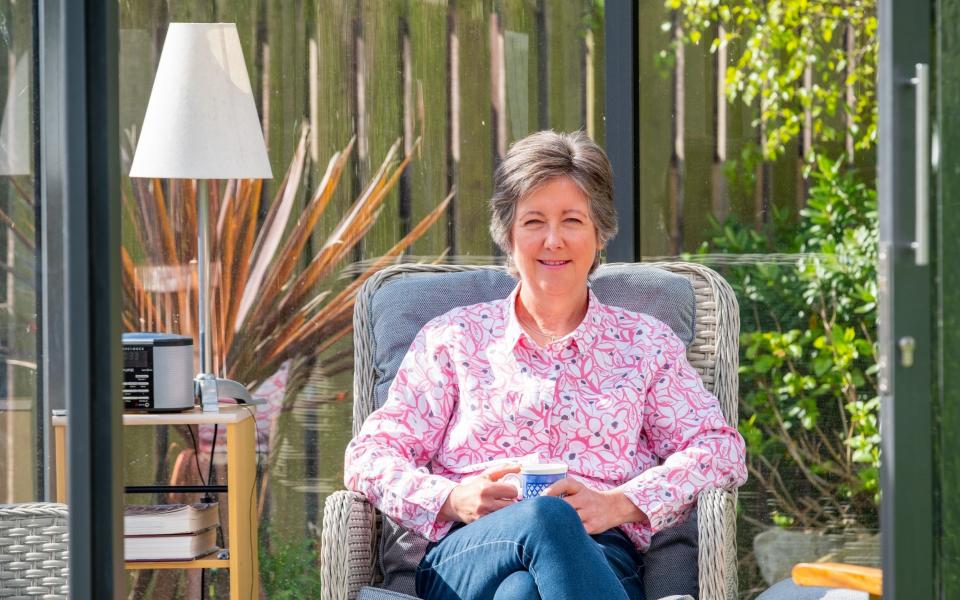'I built an empire of 70 buy-to-lets in seven years'

As rents rise and tenant demand soars, a new generation of buy-to-let landlords is being tempted into the fray.
Some 275,600 buy-to-let mortgages were taken out in the year to February, according to UK Finance, the bankers’ trade body. This was the highest number since 2016.
During the 1980s, 1990s and 2000s buy-to-let was seen as a route to easy money – until increased stamp duty and higher costs clipped the wings of amateur landlords. The pandemic served up another blow, as urban rents crashed.
But there is one certainty about the property market: nothing stays the same for long. Rents are now increasing strongly as workers return to the office: they rose by 8.8pc in the year to March, according to property portal Zoopla.
Despite this, experts warn that profit margins remain tight. The average yield on rental properties stands at 5.7pc, according to Fleet Mortgages, although landlords do also have the prospect of capital appreciation in a rising market.
But owning a rental property involves more than trying to predict house price growth and poring over spreadsheets. From wasps’ nests to wild parties, veteran landlords large and small have plenty of advice for newcomers.
'We turned to Airbnb and boosted our income'

Buy-to-let has had its ups and downs for Rachel Smith.
After moving in with her partner in 2016, Ms Smith sold her three-bedroom semi-detached house in Bristol. She and her partner, Stuart Smith, 38, spent £120,000 on a three-bedroom terrace in Somerset. With money left over they invested in a £12,000 holiday chalet in Devon, which they planned to use themselves when it was not rented out.
But the site’s £5,000-a-year ground rent wiped out potential profits. “Also, now the children are at school we can use it only in the holidays, which is when we need it to be rented,” said Ms Smith, who runs a jewellery business, iamrachel.co.uk. The couple sold the chalet for £20,000 earlier this year.
Their next purchase was much more successful – a fire-damaged two-bedroom house in Neath, South Wales, which they bought at auction for £30,000. Mr Smith renovated the property himself, working around his job as a paramedic; the work cost around £10,000. The house is now rented out at £450 a month for a yield of about 12pc. It is now valued at about £100,000.
Since then the couple have invested in two more run-down properties: a two-bedroom townhouse in Tonypandy, South Wales, which cost £30,000 at auction in 2018, and a two-bedroom flat in the coastal village of Brean, Somerset, which cost £70,000 in 2020. To keep costs to a minimum Mr Smith renovated both houses.
Initially the Tonypandy house was rented out the conventional way but, after trying and failing to sell it last year for £120,000 to free up some cash, they decided to try Airbnb instead.
The house sleeps up to nine people and even though they charge only £60 to £70 a night – “it is not luxury accommodation,” said Ms Smith – it is so far earning them more than it did as a conventional let.
On this basis they chose their Brean flat to rent out as a holiday let. The couple said that if they rented it out full-time it would go for around £500 to £600 a month. As a holiday let it raises £70 to £80 a night and they have the added benefit of being able to use it as a weekend getaway between bookings. The bonus of a holiday let is more favourable mortgage tax relief than with a buy-to-let.
Running two holiday homes and a rental house is hard work, with repairs, bookings to arrange, cleaning and changeovers. Ms Smith said half her working week was spent looking after the properties.
The couple have no immediate plans to buy more properties and are playing things by ear. “Prices might rocket in Wales and then we might sell one of them,” said Ms Smith. “We re-evaluate all the time.”
'You might not always make a stash of cash'

With a day job styling the hair of stars and socialites and two London salons to run, Paul Edmonds never set out to be a landlord.
But over the past 18 years his accidental foray into property investment has paid off, with decent returns and what promises to be outstanding capital growth.
In 1998 Mr Edmonds bought a three-bedroom flat in a mansion block in Pimlico, central London. Six years later he became a landlord after he realised that he could buy a new home and keep the flat.
Over the years he has earned an average yield of 7pc to 8pc. But the really big earner is capital growth: prices in the SW1V postcode almost quadrupled between November 2001 and November 2021, according to Rightmove, the property portal.
“There have been some ups and downs,” he said. “Anyone who takes on a buy-to-let has to understand that they are not always going to make a stash of money.
“I have had my flat trashed a couple of times. I have had a couple of tenants who threw wild parties, which meant there was uproar in the block and being hauled up and told to sort it out. I have had people who have not paid their rent.”
He added: “I have got a great agent now, Draker Lettings, but when something breaks they still have to ring you to tell you.”
If you can find a good agent and accept that not all tenants will be respectful and that breakages will always happen, buy-to-let can be a great sideline, said Mr Edmonds.
But when he comes to sell the flat – which he plans to do in the medium term to pay off his own mortgage – he won’t walk away with all the cash because he will have to pay capital gains tax.
“Although I can’t complain, that [tax bill] will be a big hit by comparison with house price growth,” he said.
The trainee pharmacist who built an empire

Over the past seven years Saif Derzi has morphed from trainee pharmacist with a little bit of spare cash to a fully fledged property mogul with a portfolio of around 70 homes.
His property career began in 2015 when he was living in Manchester. “I noticed how much regeneration was going on around Salford Quays,” he said.
“So I bought a two-bedroom flat just outside the area – I could see that there was more value to be had in second-hand stock rather than new-builds.”
Buying and renting the flat went smoothly, so in 2017, having moved to Lincoln, he bought three student houses. “At that time I didn’t use a managing agent and I was going around with a toolbox, trying to save money,” he said.
Over the years Mr Derzi has established a more sophisticated business model. Rather than get a conventional mortgage he often uses a short-term bridging loan – he uses Together, a specialist firm – to pick up undervalued properties. He then renovates them before switching to a conventional buy-to-let mortgage.
His main geographical focus is in the Midlands, North East and North West, and his preferred property type is a two-bed or three-bed terrace or semi-detached house.
“There is a real shortage of quality family homes to rent,” he said. “Most of that sort of stock is bought by owner-occupiers.
“Landlords tend to go for the cheapest part of a city, but we are looking for long-term properties which tenants will look after like it is their own and actually add value themselves.”
He added: “If you buy a flat or an HMO [house in multiple occupation] the yields may be higher but the tenants are much more transient.”
In areas where prices are growing strongly, such as the North West, Mr Derzi said he was content to find a property that would yield 6pc to 7pc. In areas where there was less prospect of capital growth he said he needed to earn around 8pc to 9pc to make a purchase worthwhile.
Over the years Mr Derzi has bought and sold around 130 properties and quit his day job; his company, SDGB Properties, now has a staff of 10.
He said he wanted to continue to grow his portfolio and has also begun to help investors to build their own rental empire.
“If you wanted to build up three or four properties, you’d need to have around £50,000 to £150,000 to invest, depending on how fast you wanted to do it,” he said.
'I just couldn’t face one more email saying something had broken'

Buy-to-let was a useful sideline for Marie Paterson. But after 15 years in the landlord game she started to feel that the not-inconsiderable rewards didn’t justify the level of aggravation.
She teamed up with her mother to buy her first investment property in 2004. “You weren’t getting very much interest from the bank even then, so we decided to invest in a buy-to-let,” she said.
Ms Paterson lives in the village of Crail in Fife and decided to look for a property in St Andrews, partly because it was nearby and partly because as a university town she felt – correctly – that there would be plenty of demand. Mother and daughter paid £115,000 for a two-bedroom terrace house.
Since her parents live in Ireland, managing the property fell to Ms Paterson. She found her own tenants, through contacts at the university.
“Was it hard work? No, to be honest, but it was unpredictable work,” said Ms Paterson, who had begun her career as a teacher and then worked for the NHS before she retrained as a wellbeing coach.
“You would get an email or a telephone call saying something had gone wrong – from a wasps’ nest to a broken washing machine – and your heart would sink. I had a full-time job and it was hard to organise things on top of that.”
When one of her two daughters went to Glasgow University in 2009 she decided to buy a flat in the city. Her daughter spent her first year in halls, so she opted to rent it out through an agent.
“They admitted to me that they were scared of the tenant they had found us, and basically I had to do everything for them,” said Marie. “They were hopeless. I am sure there are good ones out there, but we didn’t find one of them.”
The Glasgow property cost £136,000. While it was rented out – before and after her daughter lived in it – it earned an annual yield of between 5.7pc and 7pc. The flat was sold, in 2018, for £180,000, earning a profit of £44,000 in nine years.
A year later she decided to sell the house in St Andrews, which had consistently earned annual yields of between 5.2pc and 7.3pc. “I just couldn’t face one more email saying something had broken,” she said. It sold for £175,000, a profit of £60,000 over 15 years.
Her advice to others considering a similar venture is to carefully calculate the likely financial rewards and weigh up whether it will really justify the disruption. Developing good contacts with local tradespeople is also important, she said.
“And absolutely be sure to vet the tenants, even if you are using an agent. When something goes wrong it is still your problem,” she added.

 Yahoo Finance
Yahoo Finance 